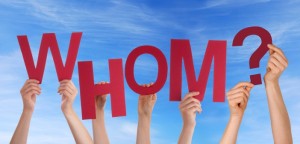A lot of up and coming writers looking to jump feet first into the paid writer’s life have their eye on shorter projects (as opposed to writing 40-page sales letters).
Too often, though, they’ll assume that writing shorter pieces means making less money. But this doesn’t have to be the case.
This is where writing for the B2B (business-to-business) industry comes in. These are business that sell their products or services to other businesses.
Sure, a 40-page sales letter could easily net a writer anywhere from $5,000 to $20,000 in fees, but a combination of common B2B writing projects — all of which are relatively short — can add up to the same amount of money.
You see, what few people realize is that the B2B buying cycle is much longer than a typical retail customer. And, it consists of many bite-sized written materials along the way.
Each of these smaller projects creates a treasure trove of opportunities for freelance writers.
It’s Not Just What, But When
B2B sales cycles are longer because the cost of a B2B product is usually higher, the complexity is greater, and the buying decision often involves multiple people in the company.
In most cases, the B2B buyer must look at a lot of technical specifications to make sure the product will function as needed. This need is magnified when considering a new product that hasn’t been widely used or isn’t well known.
And just as a sales letter provides information in a defined order, the B2B buyer needs information based on where he or she falls in the buying process. And that might consist of two or three times more copy than used for a consumer product.
Meaning, instead of a long sales letter read all at once, B2B copy is delivered through many different types of content over a period of a few weeks to several months.
Which is why B2B copy covers several different stages of the buying process. In the initial stage, known as the awareness stage, the buyer is looking for a solution and becoming aware of potential vendors.
He then enters a rather long evaluation stage, where he examines technical specifications, product functionality, and whether the product will perform as needed.
During this time, the buyer also evaluates the vendor company, deciding if it is reliable and will deliver the product as promised.
Then, finally, he makes the decision to buy — or not to buy.
Through this process, the buyer consumes pages and pages of content and copy. The importance of a B2B writer is obvious — without good content, the sale would never happen!
The B2B Buyer’s Journey
Let’s look at an example of a typical B2B buyer, Best Custom Products (“Best” for short), and how the company consumes the copy written by Techsoft — a company that provides software to assembly plants around the world.
Best has decided to replace its current bill of materials (BOM) software. The software creates a list of all the materials needed to manufacture a product.
It has to interface with the purchase order, accounting, and inventory systems so every part required for production is available when needed for assembly.
As the CEO, Angie is the lead decision-maker, but has formed a team to make a decision on the purchase. Her team includes the CIO (Jeff), the CFO (Lee), and two assembly-line supervisors (Mark and Juanita).
Replacing mission-critical software is difficult even in a best-case scenario, and Best has only decided to do so after several problems with the latest release of its current software, which the company has used for over seven years.
Step 1: Lead Generation
Jeff, the CIO, is online and sees an ad by Techsoft offering a free white paper titled, “How to Avoid Line Shutdowns and Production Delays from BOM Errors.” He immediately enters his name and email address and downloads the white paper.
The ad Jeff read was written by a copywriter who understands that the purpose of the ad is the same as a headline in a long-form sales letter: get the prospect interested in finding out more.
In addition, it’s crucial for Techsoft to get Jeff’s name and email address so they can continue to communicate with him. Once they have his contact information, he becomes a lead.
The white paper was written by a copywriter who knew the goal of this piece of content was to generate leads. By focusing on a problem and its solution, the white paper calls out to a prospect just starting to research for a potential purchase.
Meanwhile, Angie is reading an industry magazine and sees an article written by Clay Armstrong, CEO of Techsoft. In the article, he addresses the very problem Best is having with its BOM software. She has her assistant call and request more information.
As you’ve probably already guessed, Clay Armstrong didn’t actually write the article Angie read. Instead, it was ghostwritten by a freelance B2B copywriter. As was the packet of information Angie received in the mail later that week…
Step 2: Features and Benefits
In a long-form sales letter, the meat of your copy is explaining features and benefits. That’s true for both B2B and B2C copywriting.
B2B buyers might spend weeks or months pouring over brochures, videos, sell sheets, articles, white papers, and other content related to the product they are considering.
Unlike most consumer copy, which may focus solely on benefits, B2B copy also provides information about product features. B2B content that fails to include both won’t be successful.
The typical B2B buyer will read pages and pages of content — especially if it provides the information she needs to make an informed decision.
That’s definitely the case for Best Custom Products. When Angie receives the package of information in the mail, she reads it all carefully and passes the information on to everyone else on the team.
Jeff forwards the white paper he downloaded to the team, along with articles and a video he received after providing his email address. (Yes, more evidence of a B2B writer!)
While Mark and Juanita seek out the features related to the function of the software, Lee examines the interface with their existing accounting software and compares the expense of the software to other vendors. It’s easy to do since Techsoft already offers a comparison chart on its website.
Jeff’s primary concern is a smooth conversion to the new software so his focus turns to…
Step 3: Credibility
A sales letter that fails to provide proof and build credibility will leave the prospect doubting the promises made in the headline.
In B2B sales, where the price can run into millions of dollars, it’s critical to back up your claims and show a track record of success.
Techsoft provides Best with several case studies that document the success stories of several of its clients. So, in this example, case studies written by a B2B copywriter provide third-party verification of the claims made about the software.
As it turns out, Angie knows the CEO of one of the companies featured in the case study. She picks up the phone and calls her friend, who gushes about how the software has eliminated glitches in their assembly line.
Jeff then reviews a SlideShare presentation that gives him further documentation of the software’s functionality. Meanwhile, Mark and Juanita watch a video that shows them exactly how the software works on the assembly line.
And, guess what? Those slide presentations and video scripts can also be made by a B2B writer.
The team meets weekly for the next four months, discussing the information they’ve read from all three of the vendors they’re considering.
Although they spend many hours examining the software features, it’s not entirely an intellectual decision. Each has a desire to find the best option for the company — and to avoid a mistake that could cost them their job.
Satisfied that Techsoft’s software performs as promised, and their conversion team would be able to make the switch with little disruption, the purchase team looks for the final assurance…
Step 4: Guarantee
Just as in a long-form sales letter, it’s important to include a guarantee to remove as much risk as possible from the purchase.
A strong guarantee tells the prospect the company is confident it can honor its promises to clients. A company without a guarantee, or one that refuses to honor it, won’t make many sales.
Techsoft’s guarantee, written by a copywriter, provides specific compensation if the product doesn’t perform as promised, or if the conversion isn’t completed as scheduled. It’s the best Angie has seen, and along with her team, decides to take the next step…
Step 5: The Sale
At this point, you might think the copywriter’s job is over since most B2B sales are handled by the sales staff instead of through an online order form. But there’s still a need for content!
When the sales representative meets with the team from Best, he provides a sell sheet on the software, more case studies, and an article that addresses one of the team’s concerns. Then, just as in a sales letter, he gives them a call-to-action to buy the software.
After a final team meeting, Best decides to purchase the Techsoft software.
The sales representative from Techsoft gives them an infographic that clearly outlines the process for the software implementation. He also gives them access to a video series that explains everything they’ll need to do at each stage of the conversion.
Think of this as the thank you page after you’ve ordered something online. By providing additional helpful content at the time of sale, the vendor reassures the customer that the purchase was a good decision.
But we’re not done yet…
Step 6: Customer Nurturing
Each month, the team at Best receives the Techsoft email newsletter, which has helpful articles and features a happy client in each issue.
Since Techsoft’s copywriter convinced the company to start an email newsletter, there’s been a significant increase in both leads and sales.
It’s been an easy way for Techsoft to stay in touch with clients and well worth the money the company pays a freelance copywriter to produce it each month.
Techsoft also formed a LinkedIn group for clients and prospects. They publish articles regularly, written by the same B2B copywriter who publishes the newsletter.
The group has become a community for Techsoft customers, who share tips and tricks to get the most out of the company’s software.
Throughout the preparation and conversion phase, Best receives supporting content that reinforces the value of the software and gives them the confidence to move forward.
Step 7: Closing the Circle
After a few months, Angie gets a call from the Techsoft CEO, Clay. He’d like to feature her in a case study, like the ones she read when considering their software.
As a happy customer, she’s thrilled to have her story told. After all, it’s a way for her to shine among her peers… and her clients.
She gets a call from Techsoft’s copywriter and realizes her own company, Best, could use a few case studies, too — so she offers the copywriter a paid project!
One Client, Many B2B Writing Projects
As you can see in our example, although B2B projects are shorter than a long-form sales letter, there’s a lot more variety. Each piece of content helps prospects move closer to the decision to buy the product.
You might be thinking that B2B companies have staff copywriters to handle writing their content, but the reality is, they need freelance copywriters to help!
Often, in-house writers lack expertise in a particular area such as white papers or case studies. They turn to freelance copywriters to fill the void.
In nearly every successful company, there’s simply more work than the staff writers can handle. Instead of hiring a short-term employee, companies use freelancers to balance the workflow.
This is especially true when there’s a sudden increase in the need for copy such as during a new product launch, during mergers and acquisitions, and when a company is experiencing rapid growth.
Another advantage is that freelance B2B copywriters bring a fresh perspective to a company’s marketing. They can identify gaps in the marketing process and provide the copy needed to attract prospects and turn them into customers.
In our example, a freelance writer recommended a monthly newsletter — something the busy marketing department would not have attempted. But because the copywriter could also produce the letter for them, the Marketing Director said yes to the project.
As you look back over the story of Best and Techsoft, you can see how important copywriting is to the success of a company. In every stage of the B2B buyer’s journey, companies rely on professionally written content to move the buyer forward.
And the best news of all is… you can be that copywriter writing for the B2B industry!
Editors Note: To learn more about writing for the lucrative B2B market, visit the B2B Writing Success site. You’ll enjoy tips on how to improve your writing skills, advice on new ways to build your business, and insight into the ins and outs of B2B marketing trends.






